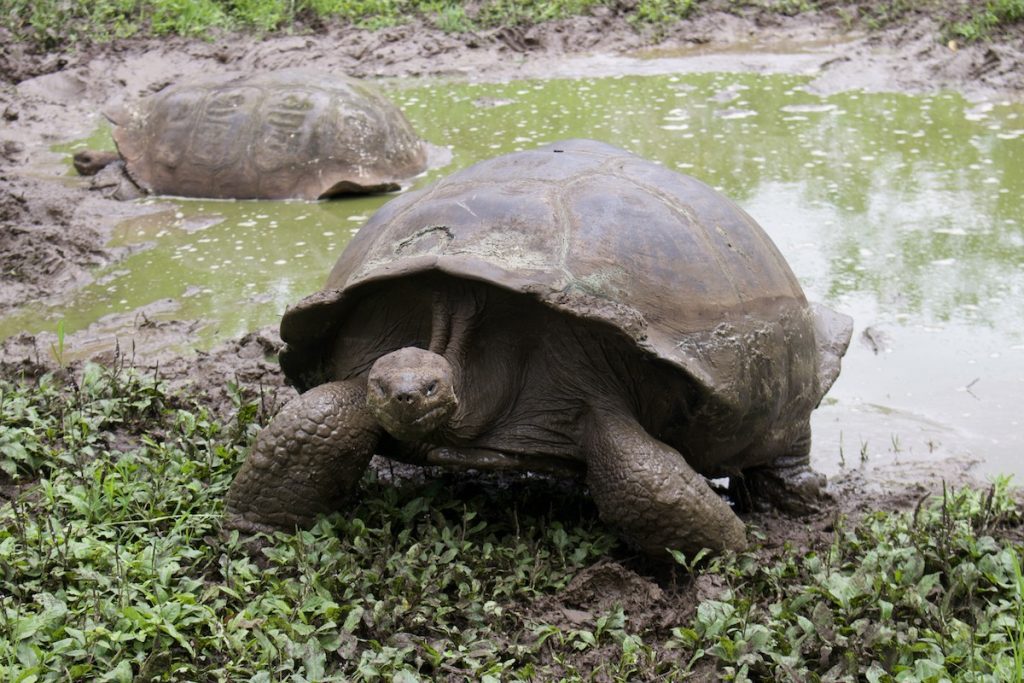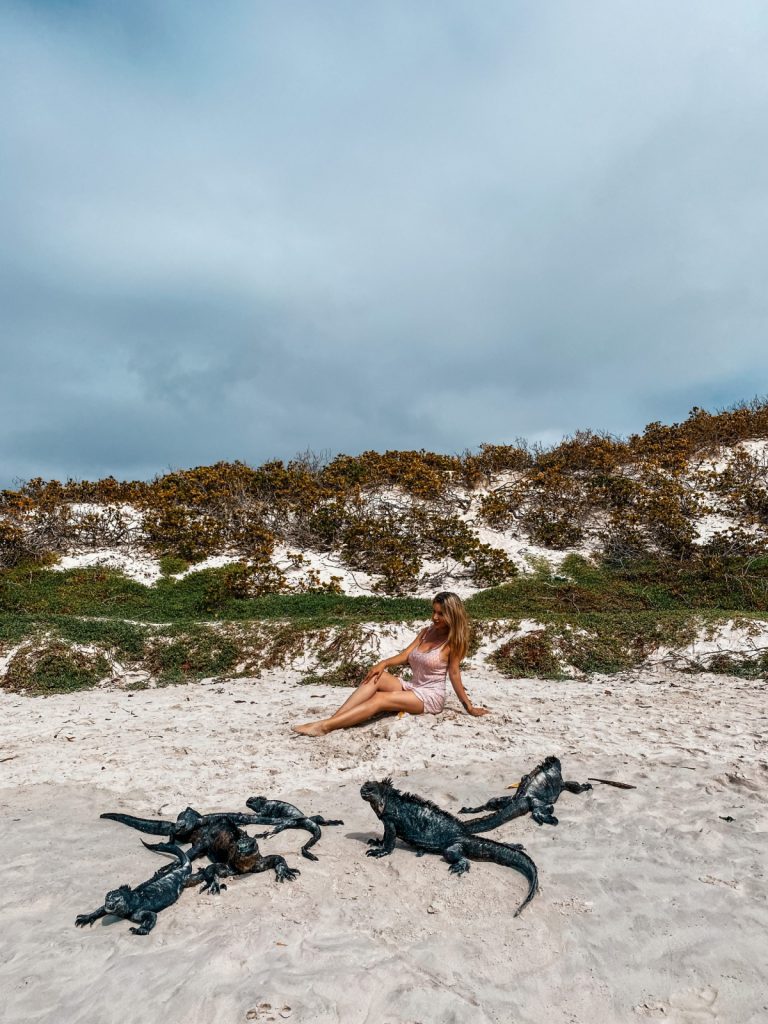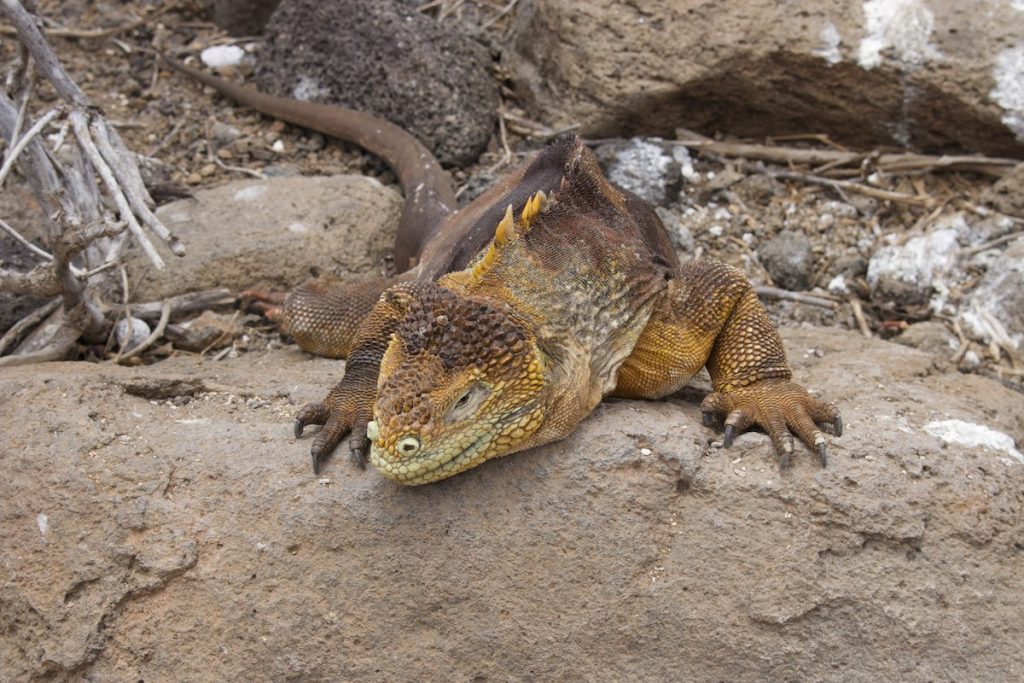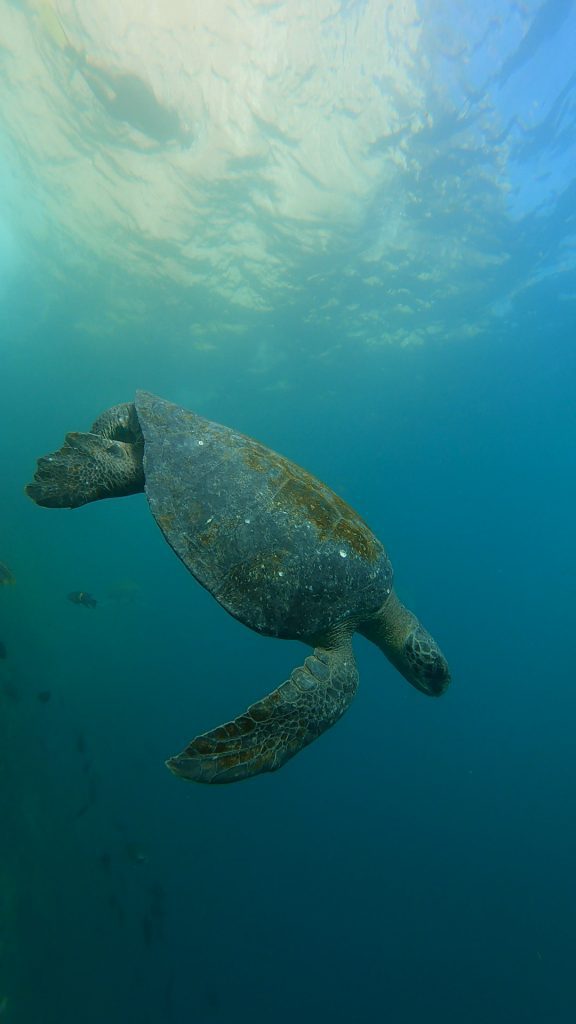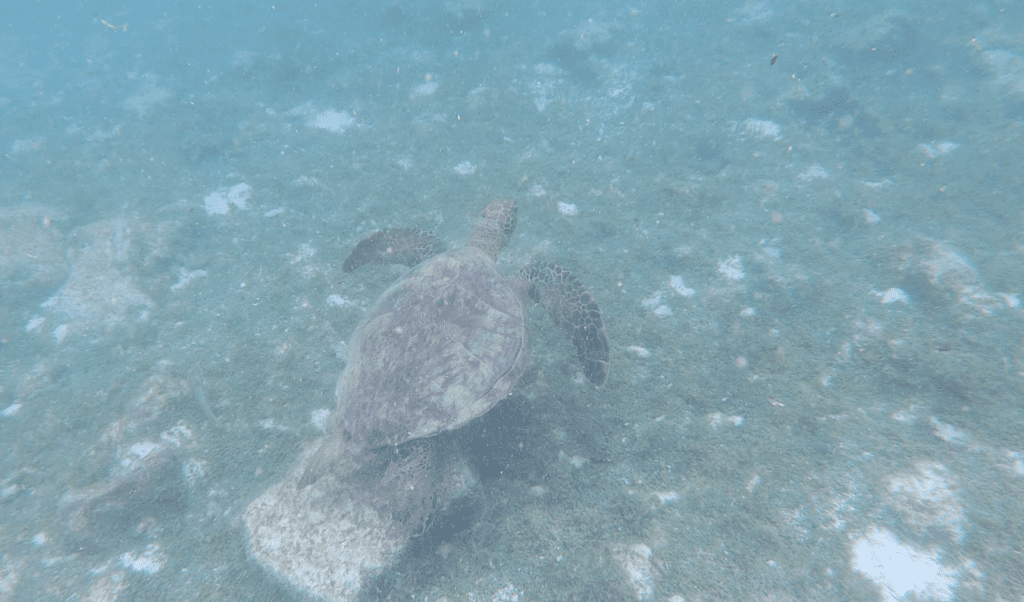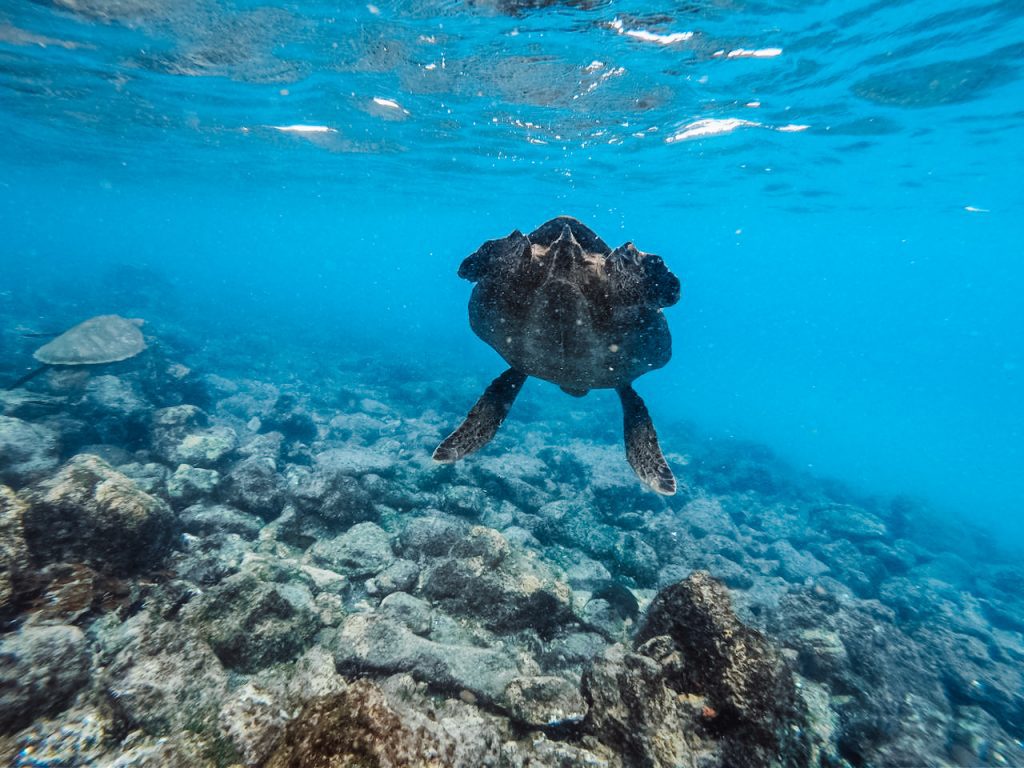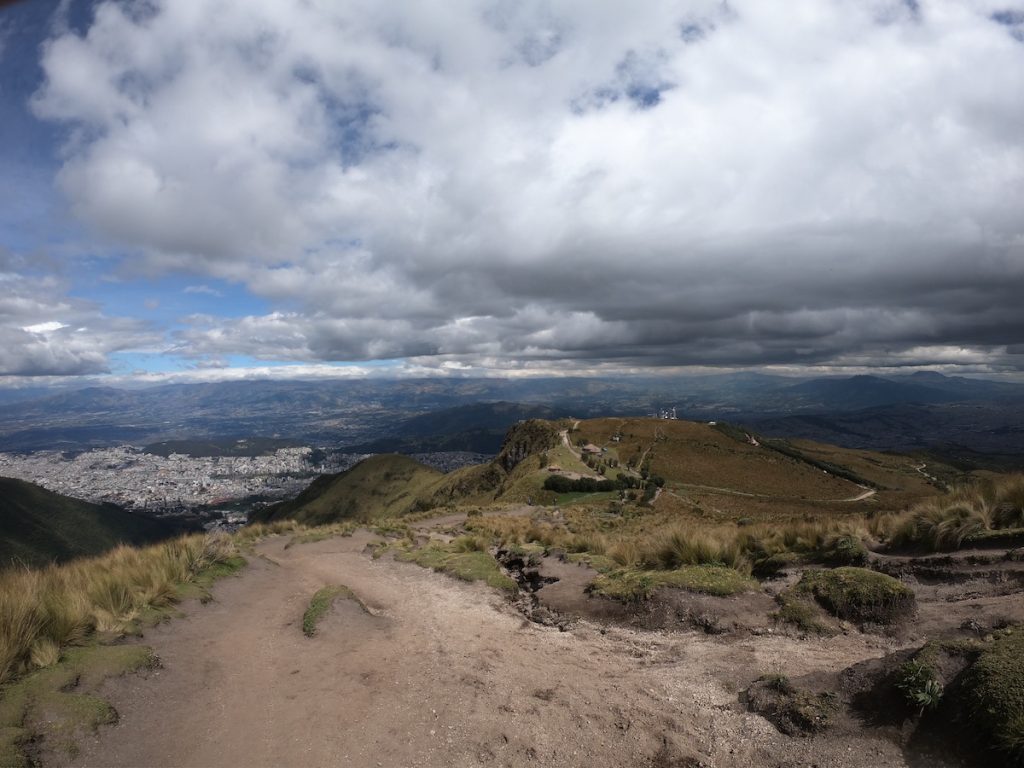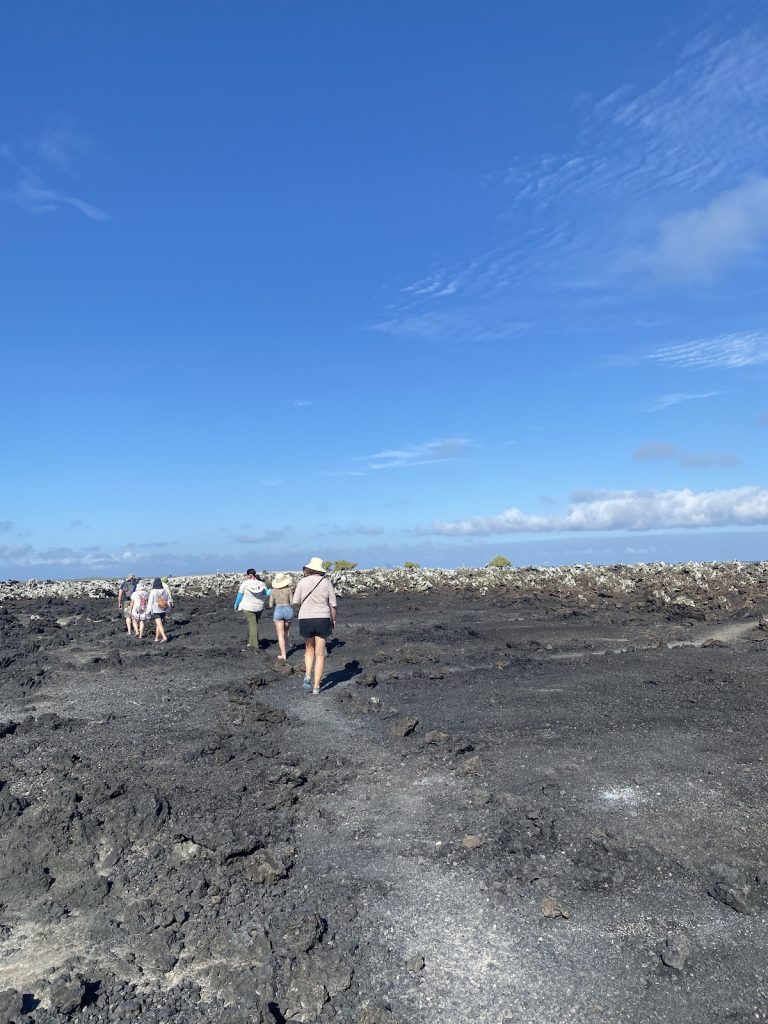You may already know that the Galapagos Islands are a living laboratory of evolution and biodiversity, but it’s something else entirely to experience it firsthand. My wife and I were absolutely mesmerized by the abundance of life on these islands, especially the reptiles, which seem to belong to another world.
During our travels through the Galapagos, we found ourselves face-to-face with creatures that felt like they were from a distant past—ancient, resilient, and completely unique. I remember vividly the moment we saw our first marine iguana basking on a rocky shore. My wife and I couldn’t believe how close we were to this remarkable species, watching it dive into the sea like a miniature dragon. It was both surreal and humbling.
In this article, I’ll share more about these fascinating reptiles we encountered during our journey, hoping to bring you closer to the magic we experienced.
When my wife and I first saw marine iguanas diving into the ocean, we couldn’t believe our eyes. Don’t miss these incredible moments – get a FREE custom itinerary from local experts who know exactly when and where to spot each unique Galapagos reptile. Your support helps this blog and local conservation efforts!
Plan perfect trip to Ecuador & Galapagos
I spent countless hours researching everything about traveling to Ecuador, and I created this blog for fellow travel enthusiasts who want the best, most reliable information. But if you want to save time, we’ve partnered with the top local agency to plan your dream trip.
Galapagos Tortoise
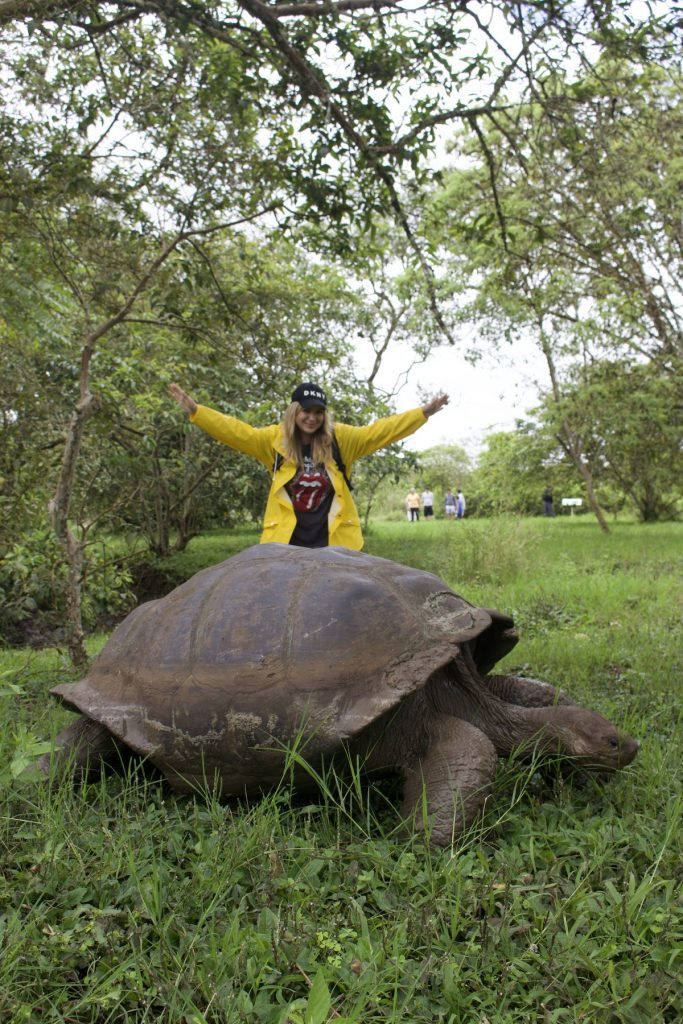
One of the true wildlife highlights for my wife and me during our time in the Galapagos was seeing the famous giant tortoises up close. These gentle giants are not only a symbol of the islands but also carry a fascinating history in their very name. We learned that “Galápago” is an old Spanish word meaning “saddle,” and it became clear why the islands were named after these creatures—their shells have that distinct saddle-like shape.
Standing near these slow-moving tortoises felt like stepping back in time. My wife and I were captivated by how each tortoise seemed to embody the ancient, untouched nature of the islands. Their unique adaptations really stand out, especially considering the absence of other large plant-eaters. Over the centuries, these tortoises evolved to fill a special role in the ecosystem, with their shells perfectly suited to the environments they inhabit. It was fascinating to witness this firsthand and reflect on how life here is so intertwined with the landscapes.
In this article, I’ll share more insights into the incredible changes these tortoises have undergone and what makes them such a vital part of the Galapagos story.
While exploring the wet highlands of the Galapagos, my wife and I were struck by the dome-shaped shells of the giant tortoises we encountered. These majestic creatures, munching on low-growing plants, seemed perfectly at ease in their lush surroundings. But when we ventured to the drier islands, we noticed something different—their shells were shaped more like saddles, and their long necks stretched up to reach the taller vegetation. It was remarkable to see firsthand how these tortoises have adapted to the specific conditions of their habitats.
These giant tortoises symbolize much more than just the islands—they represent the need for ecological protection and the delicate balance of the Galapagos ecosystems. Sadly, we learned that their numbers have dramatically decreased over the years. My wife and I couldn’t help but feel a sense of sorrow as we listened to stories of how whalers once hunted these tortoises for food and oil, pushing them to the brink of extinction. Even now, invasive species like goats have destroyed much of their habitat, and wild cats and dogs continue to prey on their vulnerable young.
It’s hard not to feel a sense of urgency when faced with these facts, but at the same time, we left feeling hopeful, knowing that conservation efforts are underway to protect these incredible creatures. In this article, I’ll explore more about their past challenges and the ongoing efforts to ensure their future survival.
Conservation efforts have played a crucial role in ensuring the survival of these ancient giants. My wife and I were heartened to learn about the ongoing programs dedicated to protecting their habitats and boosting their populations. It’s inspiring to see how much care and dedication goes into helping these tortoises thrive once again.
During our visit to the Galapagos, we had the chance to visit a breeding center, where we saw these incredible creatures up close. Watching the staff work tirelessly to help the baby tortoises grow safely was both humbling and inspiring. It felt like witnessing the future of the species in action. Standing there, seeing these giant tortoises in their natural habitat, was like meeting living legends—creatures that have stood the test of time but still need our protection to continue their journey.
It was a moment that made me reflect on the delicate balance of nature and our responsibility to care for it. These tortoises are such a special part of the Galapagos, a reminder of the amazing diversity of life on Earth and how important it is to safeguard it for future generations.
Iguanas
Galapagos iguanas are truly remarkable creatures, and learning about their origins made our experience even more fascinating. These iguanas originally came from the mainland of South America but evolved in isolation, resulting in two distinct types: land iguanas and marine iguanas. It’s amazing how nature shapes life to fit its environment.
When my wife and I explored the islands, we encountered three different types of land iguanas, each thriving in its own unique habitat. It was incredible to see how each species had perfectly adapted to the specific conditions of its island. Watching these iguanas basking in the sun or foraging for food felt like observing a chapter of evolution in real-time.
These encounters reminded us of how diverse and resilient life can be, especially in such a unique place as the Galapagos. I’ll share more about these fascinating creatures in the following sections of this article, highlighting how they adapted to their environments and what makes them so special.
One of the most extraordinary discoveries my wife and I made during our time in the Galapagos was learning about the unique pink land iguana. This rare species lives exclusively on the slopes of Wolf Volcano on Isabela Island. Knowing that it’s the oldest species within the land iguana lineage—and only recently recognized by scientists—made seeing it all the more special. It felt like we were witnessing a living relic of natural history, tucked away on this remote island.
But perhaps the most surreal sight for us was watching the marine iguanas, the world’s only lizards that brave the ocean waters. Seeing them dive into the waves and submerge themselves to feed on algae growing on submerged rocks was unlike anything we’d ever experienced. It’s such a strange, almost otherworldly scene—lizards swimming in the sea, then emerging onto the shore as if nothing unusual had happened.
After their underwater adventures, the marine iguanas would make their way back to the rocky coast to soak up the sun’s warmth, recovering from their time in the chilly ocean. It was a humbling reminder of the adaptability of life in the Galapagos, and how creatures have evolved to survive in some of the most unique environments on Earth.
Galapagos Green Turtles
Have questions about your upcoming Galapagos trip? Join my Galapagos Reddit community and ask other travelers who recently visited the islands. Get up-to-date tips, real experiences, and honest advice from other travelers (I ban tour agencies and resellers).
The Galapagos green sea turtles, which my wife and I were lucky enough to see during our visit, are truly remarkable. These turtles are different from the typical green turtles you might imagine. They belong to the Eastern Pacific variety, making them distinct from their Atlantic relatives. While their skin and cartilage carry a subtle greenish tint, their shells are more of an olive-brown or even black color, a beautiful contrast that blends with the ocean waters.
One of the things that really stood out to us was the unique teardrop shape of their shells, tapering toward the back with a slight ridge. This streamlined design is not just for looks—it’s essential for their survival, given their sheer size. Some of these turtles can weigh up to 700 pounds and grow as long as 5 feet, making them among the largest sea turtles in the world. Watching them glide effortlessly through the water was mesmerizing. Despite their massive size, they moved with such grace, a true testament to how perfectly they’ve adapted to their environment.
One of the most unforgettable experiences my wife and I had during our September trip to the Galapagos was witnessing the incredible spectacle of green sea turtles returning to the same beaches their ancestors once nested on. It’s a powerful reminder of the cyclical nature of life and the deep connection these turtles have with their environment. The beaches, often closed off to protect the vulnerable hatchlings, serve as a safe haven for the next generation of these magnificent creatures.
We were lucky enough to catch a rare sight—these black sea turtles emerging from the waves to bask in the sun and sand. This “basking” behavior is uncommon even among sea turtles, making the Galapagos green turtles truly unique. Watching them rest on the beach, soaking up the warmth, was a moment that felt surreal, a beautiful pause in the constant rhythm of nature. It’s yet another testament to the rich biodiversity of the Galapagos, where every encounter feels like a rare and awe-inspiring gift.
Lava Lizards

The lava lizards of the Galapagos Islands are yet another fascinating example of how animals have evolved to thrive in unique environments. My wife and I were amazed by how these tiny, quick-moving reptiles have adapted so differently across the islands. Through adaptive radiation, seven distinct species of lava lizards have emerged, each with its own traits depending on the specific island they inhabit.
We spotted several of these lizards in the lowland areas of the major islands, and it was incredible to notice how their colors and behaviors varied from place to place. While the hefty iguanas move slowly and seem almost prehistoric, these little lava lizards darted around with surprising speed. The males often displayed darker shades with hints of yellow and green, while the females were more reddish, with striking red patches on their cheeks when fully grown. Our guide even mentioned how their coloring changes with their mood, like a living mood ring—a detail that made them even more captivating.
We were told by our guide that these lava lizards are common across most islands, except for Genovesa, Darwin, and Wolf. It’s yet another reminder of the Galapagos Islands’ incredible biodiversity, where even the smallest creatures have their own unique story to tell. In this article, I’ll explore more about these fascinating reptiles and how they’ve adapted to their specific environments.
Looking back, I wish we’d known more about the best seasons to see different reptiles, like green turtle nesting or giant tortoise breeding. Get a FREE personalized itinerary from local experts who’ll help you time your visits perfectly. Your quote request supports this blog and Galapagos conservation!
Hawksbill Turtle
If you’re a fan of the beauty that lies beneath the waves, you’ll fall in love with the hawksbill sea turtles. My wife and I were captivated by these turtles during our time in the Galapagos. Their intricately patterned shells, which almost resemble tie-dye art, are like living works of art. It’s no wonder that “tortoiseshell” goods once became popular, but seeing these creatures in their natural habitat far surpasses anything that could be made into a product. Watching them glide effortlessly through the water was a moment that felt almost magical, reminding us how precious these animals truly are.
Hawksbill turtles are easy to recognize because of their distinctive hooked beaks, which resemble those of a bird. These beaks, along with their slim heads, allow them to explore coral reefs and reach into tight crevices to snack on their favorite food—sponges. It was fascinating to think about how specialized they are, perfectly adapted to their environment.
Outside the coral reefs, we learned that hawksbill turtles often frequent shallow areas like lagoons, mangroves, and rocky coastlines, where they have a more varied diet. They munch on everything from plants to small creatures, and even fish, depending on what’s available.
These turtles aren’t just beautiful; they play a vital role in the delicate ecosystems of the Galapagos. Their elegance and unique lifestyle are a testament to the incredible diversity of nature, and it was an unforgettable experience to witness them in their element.
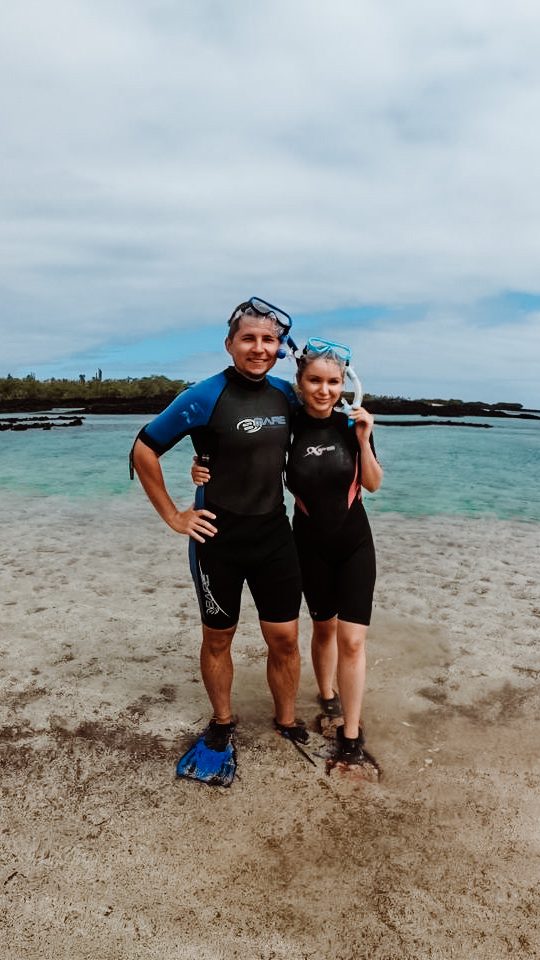
Planning trip to Galapagos Islands?
My wife and I spent two weeks on these magnificent islands, visited nearly every possible tour, and explored as much as we could. I shared all the important details in my comprehensive Galapagos Islands Travel Guide, where I cover everything you need to know about planning a trip to the Galapagos.
Galapagos Islands travel might surprise you with extra fees to enter the islands, the complicated logistics between islands, booking tours, and knowing which spots are free to explore and which ones are not. I’ve covered it all in this Galapagos Travel Guide.
Also, if you’re planning a trip to the Galapagos, make sure to use my link for discounted hotel prices via Booking.com. It really helps support my blog!



